Inside The New York Botanical Garden
The New York Botanical Garden
Posted in Bill Buck, From the Field, Science on February 22 2013, by William R. Buck
January 13, 2013, Prov. Antártica Chilena, Comuna Cabo de Hornos, Isla Grande de la Tierra del Fuego, Bahía Yendegaia, 54°50’S, 68°48’W
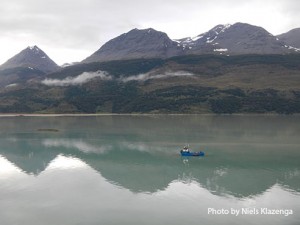 The ship moves overnight. We arrive here at 4:30 a.m., just 15 minutes after I come up on the deck. However, except for the captain’s area, all is quiet with the crew and so I return to my bunk until there is more activity and the sun is up. Returning to deck at 7:30 a.m.–still the first non-crew–I find that we are in a quiet bay and that there is a light rain falling. The bay is fed by a shallow but broad river originating at a glacier. As a consequence, the water in the bay is milky and opaque from the large silt load. I don’t remember ever having seen this down here before and I wonder if it will be an indication of a different local substrate (and thus a different bryoflora).
The ship moves overnight. We arrive here at 4:30 a.m., just 15 minutes after I come up on the deck. However, except for the captain’s area, all is quiet with the crew and so I return to my bunk until there is more activity and the sun is up. Returning to deck at 7:30 a.m.–still the first non-crew–I find that we are in a quiet bay and that there is a light rain falling. The bay is fed by a shallow but broad river originating at a glacier. As a consequence, the water in the bay is milky and opaque from the large silt load. I don’t remember ever having seen this down here before and I wonder if it will be an indication of a different local substrate (and thus a different bryoflora).
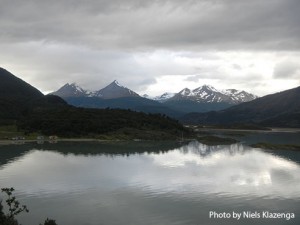 After several seasons of collecting in pristine areas, the existence of a ranch just over the hill from where we are anchored and evidence of human influence on the landscape seems quite odd. When we split up half the group goes to see the ranch and look for bryophytes on disturbed substrates. I, along with Paddy and Niels, choose to cross the bay which proves quite the challenge. The cloudiness of the water combines with what I can only interpret as low tide making the bottom invisible. As the Zodiac approaches the shore, the water begins to churn with the activity of what seems to be a large number of large fish (we couldn’t be sure because the water is so cloudy we can’t actually see what is causing the commotion).
After several seasons of collecting in pristine areas, the existence of a ranch just over the hill from where we are anchored and evidence of human influence on the landscape seems quite odd. When we split up half the group goes to see the ranch and look for bryophytes on disturbed substrates. I, along with Paddy and Niels, choose to cross the bay which proves quite the challenge. The cloudiness of the water combines with what I can only interpret as low tide making the bottom invisible. As the Zodiac approaches the shore, the water begins to churn with the activity of what seems to be a large number of large fish (we couldn’t be sure because the water is so cloudy we can’t actually see what is causing the commotion).
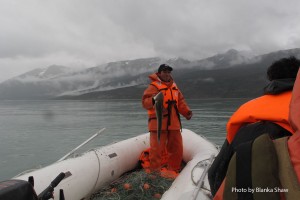 Our Zodiac runs aground at least 50 yards from shore and we are surprised to find the water shallow enough to wade to shore through a muddy, seaweedy slush. Our boots sink into the slimy mess up to our ankles making each step a chore. While we struggle to shore, the existence of fish is confirmed; after dropping us off the crew get a net and go fishing. By the time I return to the Zodiac the crew have caught well over 20 fish, each about a foot long, each the same and going by the local of name of robalo. There will be fresh fish for dinner tonight, and for days to come. The freezer is now well stocked!
Our Zodiac runs aground at least 50 yards from shore and we are surprised to find the water shallow enough to wade to shore through a muddy, seaweedy slush. Our boots sink into the slimy mess up to our ankles making each step a chore. While we struggle to shore, the existence of fish is confirmed; after dropping us off the crew get a net and go fishing. By the time I return to the Zodiac the crew have caught well over 20 fish, each about a foot long, each the same and going by the local of name of robalo. There will be fresh fish for dinner tonight, and for days to come. The freezer is now well stocked!
Read More
Posted in Bill Buck, From the Field, Science on February 21 2013, by William R. Buck
January 12, 2013, Prov. Antártica Chilena, Comuna Cabo de Hornos, Parque Nacional Alberto de Agostini, Isla Gordon, Bahía Tres Brazos, 54°59’S, 69°45’W
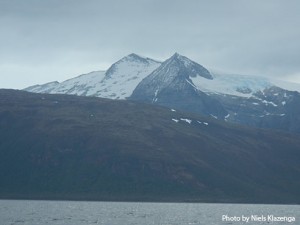 The engines of the ship start at 5 a.m. and, as promised, we get an early start toward our next site. Also as promised, the seas are relatively calm and the bunk room remains a seasickness free zone. I get up at 7 a.m., but when I get up to the galley it is still dark with sleeping crew (after all, their beds had been occupied by oil-body photographers until midnight) and the bathroom is occupied. I tried waiting on deck, but wind and rain chase me into the threshold of the galley where I stand quietly in the dark awaiting my turn. Since there isn’t much point in being up, I return to bed for a couple of hours until there is more activity.
The engines of the ship start at 5 a.m. and, as promised, we get an early start toward our next site. Also as promised, the seas are relatively calm and the bunk room remains a seasickness free zone. I get up at 7 a.m., but when I get up to the galley it is still dark with sleeping crew (after all, their beds had been occupied by oil-body photographers until midnight) and the bathroom is occupied. I tried waiting on deck, but wind and rain chase me into the threshold of the galley where I stand quietly in the dark awaiting my turn. Since there isn’t much point in being up, I return to bed for a couple of hours until there is more activity.
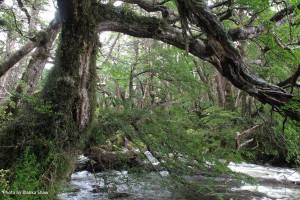 Last year we had a dedicated cook for the whole trip but this year we are told it will be a team effort among three members of the crew. We are initially somewhat apprehensive, but also know the crew themselves won’t tolerate poorly prepared food. It turns out we have nothing to worry about–the two guys who are primarily responsible for the food have proven to be better even than previous years. We get our first fresh bread for breakfast, which completely eliminates our last reservations about the food.
Last year we had a dedicated cook for the whole trip but this year we are told it will be a team effort among three members of the crew. We are initially somewhat apprehensive, but also know the crew themselves won’t tolerate poorly prepared food. It turns out we have nothing to worry about–the two guys who are primarily responsible for the food have proven to be better even than previous years. We get our first fresh bread for breakfast, which completely eliminates our last reservations about the food.
We reach our destination for the day in the early afternoon. This is our second repeat site chosen to show the new people a really mature southern beech forest. Only Laura and I have visited this forest before; it is special enough to show the others and to explore what might have been missed the first time. Much to our delight, the forest doesn’t disappoint.
Read More
Posted in Bill Buck, From the Field, Science on February 20 2013, by William R. Buck
January 11, 2013, Prov. Antártica Chilena, Comuna Cabo de Hornos, Parque Nacional Alberto de Agostini, Isla Grande de la Tierra del Fuego, NE-most arm of Seno Courtenay, 54°34’34”S, 71°10’41”W
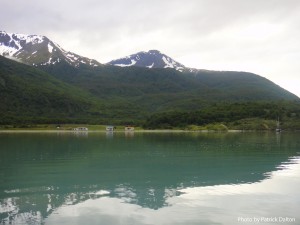 The night ends early and abruptly. Right after 1:30 a.m. we hit a very rough stretch of seas where we have to cross–perpendicular to the wind and waves–a large stretch of open, rough water just south of Cape Froward (the southernmost tip of continental South America). At first the ship is tossed into the air and banged back down into the sea, awakening everyone. Our little ship, a mere 60 × 20 feet, tosses about for hours on end. Anything not tied down or already on the floor is soon there.
The night ends early and abruptly. Right after 1:30 a.m. we hit a very rough stretch of seas where we have to cross–perpendicular to the wind and waves–a large stretch of open, rough water just south of Cape Froward (the southernmost tip of continental South America). At first the ship is tossed into the air and banged back down into the sea, awakening everyone. Our little ship, a mere 60 × 20 feet, tosses about for hours on end. Anything not tied down or already on the floor is soon there.
Quite reasonably, the crew closes the door to the bunk room so waves won’t slosh down the ladder. However, this makes the room quite warm and increases the prospects of seasickness. And then, just like that, around 4:15 a.m. it all stops; I feel a cool breeze and the seas calm. Most of the group, exhausted from fighting to stay in our bunks and not get sick (some more successfully than others) fall swiftly back to sleep. Unfortunately it is to be a short reprieve.
Read More
Posted in Bill Buck, From the Field, Science on February 19 2013, by William R. Buck
Ed. note: NYBG scientist and Mary Flagler Cary Curator of Botany, Bill Buck has just returned from his annual expedition to the islands off Cape Horn, the southernmost point in South America, to study mosses and lichens. For the past two years he was able to file stories from the field, but this year’s locations proved so remote he was forced to wait until his return. We will be publishing them over the course of several days.
January 10, 2013, Punta Arenas, Chile
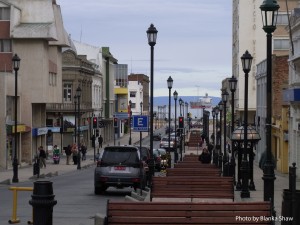 The waiting is finally over. I arrive here Sunday evening after a grueling 36 hour trip from my home in New York. The trip is always horrible with inevitable long layovers, a 9+ hour international flight, an an additional 4-5 hour flight down to Punta Arenas. It seems somehow unjust after enduring that long flight to then be crammed into an Airbus 320 with scarcely enough leg room for someone significantly shorter than me.
The waiting is finally over. I arrive here Sunday evening after a grueling 36 hour trip from my home in New York. The trip is always horrible with inevitable long layovers, a 9+ hour international flight, an an additional 4-5 hour flight down to Punta Arenas. It seems somehow unjust after enduring that long flight to then be crammed into an Airbus 320 with scarcely enough leg room for someone significantly shorter than me.
I meet up with Juan Larraín (of previous trips) who is now a post-doctoral student at the Field Museum in Chicago. Juan has already been in Chile for a few weeks to visit his family over the holidays. I hardly recognize him because he has shaved his beard since I saw him last, but he hasn’t shrunk and so is still at least a head taller than most Chileans. I had asked Juan to arrive in Punta Arenas a day earlier than everyone else so he and I could start preparations for this year’s expedition. Additionally, we are welcomed to Punta Arenas by our old friend Ernesto Davis, who also acts as our local facilitator.
Read More
Posted in Around the Garden on November 1 2012, by Ann Rafalko
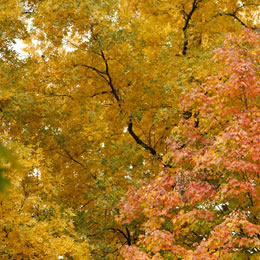 After bracing for and weathering Hurricane Sandy you deserve a break. We are working hard to restore our beautiful grounds to their pre-storm splendor and safety for you, our visitors. We have already reopened many areas across our 250 acres–including the Everett Children’s Adventure Garden and the Enid A. Haupt Conservatory. In addition, we have re-instituted Tram service, reduced the cost of Garden admission, and are carrying on with our Fall Forest Weekends! Now that the Metro-North Railroad has restored significant service on the Harlem Line, you can once again ride the train from Grand Central or points north and be let off at Botanical Garden Station, just across the street from our Mosholu Gate entrance.
After bracing for and weathering Hurricane Sandy you deserve a break. We are working hard to restore our beautiful grounds to their pre-storm splendor and safety for you, our visitors. We have already reopened many areas across our 250 acres–including the Everett Children’s Adventure Garden and the Enid A. Haupt Conservatory. In addition, we have re-instituted Tram service, reduced the cost of Garden admission, and are carrying on with our Fall Forest Weekends! Now that the Metro-North Railroad has restored significant service on the Harlem Line, you can once again ride the train from Grand Central or points north and be let off at Botanical Garden Station, just across the street from our Mosholu Gate entrance.
To summarize:
– Many parts of the Garden are OPEN, including the Conservatory’s permanent collections, Children’s Adventure Garden, and more.
– All-Garden Pass admission is reduced 50% through Friday, making it just $10! Use code 9912 online to purchase your tickets. Reduced prices will also be honored on site.
– All-Garden Pass admission includes the Tram, Conservatory, and Adventure Garden.
– Come enjoy the splendor of Manolo Valdés‘ beautiful site-specific sculptures.
– Saturday and Sunday, join us in the Forest for Fall Forest Weekends! Explore the Thain Family Forest and immerse yourself in the magnificent colors of fall foliage. Tree-climbing demonstrations, guided tours, canoe trips on the Bronx River, and more make for an unforgettable autumn experience.
There’s fun and beauty to be had all weekend long. So come visit! It’s one of the best ways to support the NYBG as we tackle this herculean cleanup effort, and a walk around the Garden is just the thing to help erase cabin fever!
Get your tickets now! Use code 9912.
Posted in Around the Garden on October 31 2012, by Todd Forrest
In the aftermath of this week’s storm, people have been asking about the status of The New York Botanical Garden‘s living collections. We wanted to update you on the damage inflicted by the storm at the Botanical Garden.
[Not a valid template]
Hurricane Sandy caused significant damage to trees, fences, small structures, signs, and one building across the 250 acres of The New York Botanical Garden. While we are still assessing the damage, initial surveys reveal that over 100 native trees in the Forest and throughout the landscape, including some of our ancient and most magnificent oaks, were destroyed. Hundreds of mature pines, spruces, and firs in the Ross Conifer Arboretum and Benenson Ornamental Conifers and other irreplaceable collections of trees across the Garden were damaged. Over the next few days, curators and arborists will carefully inspect trees across the landscape for broken and damaged limbs and other substantial damage not immediately apparent after the storm.
Staff members of the Garden’s Operations and Horticulture Divisions began clean-up efforts even before the storm had moved inland. Their initial efforts focused on the clearing of roads and the removal of downed trees from buildings and structures. Certain areas of the Garden, including the Forest, the Azalea Garden, the Ross Arboretum, and the Benenson Ornamental Conifers will remain closed until the damage in these areas can be fully assessed and paths and roadways cleared.
While Sandy’s fierce winds have altered the tree canopy that lends singular grace and beauty to our historic landscape, we are working hard to re-establish the calm beauty that makes the Garden an oasis for all New Yorkers, particularly during trying times. Many sections of the Garden, including the Enid A. Haupt Conservatory, will re-open to the public on Thursday, November 1.

Posted in Around the Garden on August 20 2012, by Ann Rafalko
The Edible Garden Festival and Garden-to-Table Dinner and Cooking Demonstration with Mario Batali on September 23 is fast approaching! “Mario Batali’s Kitchen Gardens” in the Ruth Rea Howell Family Garden are bursting with produce. Check it out!
Read More
Posted in Around the Garden on August 13 2012, by Ann Rafalko
 Mark you calendars: The Edible Garden Festival is just over a month away; on September 23, The New York Botanical Garden will be home to one big, family-friendly edible festival featuring Garden friend Mario Batali!
Mark you calendars: The Edible Garden Festival is just over a month away; on September 23, The New York Botanical Garden will be home to one big, family-friendly edible festival featuring Garden friend Mario Batali!
Families can spend the day in the Ruth Rea Howell Family Garden exploring “Mario Batali’s Kitchen Gardens,” watch cooking demonstrations with NYBG staff, participate in a plethora of hands-on gardening activities, and enjoy food sampling. A special ticket is required for the Festival and includes All-Garden Pass access to the Garden. This ticket does not include the Mario Batali cooking demonstration or the Garden-to-Table Dinner with Mario Batali.

Read More
Posted in Programs and Events on July 9 2012, by Ann Rafalko
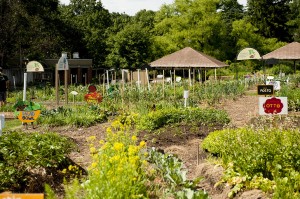 What did you have for dinner last night? Did you whip it up from scratch, or were there boxes involved? Did you sit at the table, or in front of the TV? I’m not one to judge. I don’t even own a dining room table (my apartment is so small, I declared victory when I found a suitably sized TV tray), and my husband and I can often be found rooting on the Yankees over a bowl of pasta and a glass of New York’s finest.
What did you have for dinner last night? Did you whip it up from scratch, or were there boxes involved? Did you sit at the table, or in front of the TV? I’m not one to judge. I don’t even own a dining room table (my apartment is so small, I declared victory when I found a suitably sized TV tray), and my husband and I can often be found rooting on the Yankees over a bowl of pasta and a glass of New York’s finest.
Whether that’s tap water or a pint of local brew, I’ll let you decide.
New York City is a tough place to indulge in the idyllic family dinner; our apartments are small, our kids are as busy as we are, and especially in the summer, it can get so hot that it makes it seem perfectly reasonable to splurge on dinner out–if only to soak in someone’s air conditioning while they feed us. Like I said: no judgment. So wouldn’t it be nice not only to sit down with your entire family, but to sit down with a community of like-minded families for a three-course meal prepared by some of the city’s best chefs, in one of the city’s best gardens? Yeah, I think so, too. And that’s just what you can do–twice this July and twice again in August in the Ruth Rea Howell Family Garden.
Read More
Posted in Photography on May 19 2012, by Ann Rafalko
Bienvenue à Monet’s Garden!

Photo by Ivo M. Vermeulen
Read More
 The ship moves overnight. We arrive here at 4:30 a.m., just 15 minutes after I come up on the deck. However, except for the captain’s area, all is quiet with the crew and so I return to my bunk until there is more activity and the sun is up. Returning to deck at 7:30 a.m.–still the first non-crew–I find that we are in a quiet bay and that there is a light rain falling. The bay is fed by a shallow but broad river originating at a glacier. As a consequence, the water in the bay is milky and opaque from the large silt load. I don’t remember ever having seen this down here before and I wonder if it will be an indication of a different local substrate (and thus a different bryoflora).
The ship moves overnight. We arrive here at 4:30 a.m., just 15 minutes after I come up on the deck. However, except for the captain’s area, all is quiet with the crew and so I return to my bunk until there is more activity and the sun is up. Returning to deck at 7:30 a.m.–still the first non-crew–I find that we are in a quiet bay and that there is a light rain falling. The bay is fed by a shallow but broad river originating at a glacier. As a consequence, the water in the bay is milky and opaque from the large silt load. I don’t remember ever having seen this down here before and I wonder if it will be an indication of a different local substrate (and thus a different bryoflora). After several seasons of collecting in pristine areas, the existence of a ranch just over the hill from where we are anchored and evidence of human influence on the landscape seems quite odd. When we split up half the group goes to see the ranch and look for bryophytes on disturbed substrates. I, along with Paddy and Niels, choose to cross the bay which proves quite the challenge. The cloudiness of the water combines with what I can only interpret as low tide making the bottom invisible. As the Zodiac approaches the shore, the water begins to churn with the activity of what seems to be a large number of large fish (we couldn’t be sure because the water is so cloudy we can’t actually see what is causing the commotion).
After several seasons of collecting in pristine areas, the existence of a ranch just over the hill from where we are anchored and evidence of human influence on the landscape seems quite odd. When we split up half the group goes to see the ranch and look for bryophytes on disturbed substrates. I, along with Paddy and Niels, choose to cross the bay which proves quite the challenge. The cloudiness of the water combines with what I can only interpret as low tide making the bottom invisible. As the Zodiac approaches the shore, the water begins to churn with the activity of what seems to be a large number of large fish (we couldn’t be sure because the water is so cloudy we can’t actually see what is causing the commotion). Our Zodiac runs aground at least 50 yards from shore and we are surprised to find the water shallow enough to wade to shore through a muddy, seaweedy slush. Our boots sink into the slimy mess up to our ankles making each step a chore. While we struggle to shore, the existence of fish is confirmed; after dropping us off the crew get a net and go fishing. By the time I return to the Zodiac the crew have caught well over 20 fish, each about a foot long, each the same and going by the local of name of robalo. There will be fresh fish for dinner tonight, and for days to come. The freezer is now well stocked!
Our Zodiac runs aground at least 50 yards from shore and we are surprised to find the water shallow enough to wade to shore through a muddy, seaweedy slush. Our boots sink into the slimy mess up to our ankles making each step a chore. While we struggle to shore, the existence of fish is confirmed; after dropping us off the crew get a net and go fishing. By the time I return to the Zodiac the crew have caught well over 20 fish, each about a foot long, each the same and going by the local of name of robalo. There will be fresh fish for dinner tonight, and for days to come. The freezer is now well stocked!








